Viral Content
What Is Viral Content?
Viral content is online content that achieves a high level of awareness due to shares and exposure on social media networks, news websites, aggregators, email newsletters, and search engines.
Authentic Engagement is the New Viral Content
When someone says “I want to go viral” to a marketing expert or agency, they’ll likely hear a very heavy sigh.
That’s because for years, people have wanted to go viral for the sake of going viral. They wanted that one post or piece of content that reached millions of people, got some great exposure, but ultimately didn’t change their revenue in a substantial way.
It’s true that a single piece of viral content can generate significant amounts of brand awareness and traffic to your website.
But there’s a catch:
Viral content is very difficult to pull off. And if you spend all your time and energy trying to crack the non-existent code, you’ll end up focusing on the wrong things:
- What everyone else is doing
- What makes you “popular” over what makes you quality
- Being a flash in the pan rather than a lasting brand
Instead, strive for authentic engagement with your top-of-the-funnel content. Create what you know your audience will love, and then make it easier for them to find it, understand it, and share it. This will lead to more sustainable, results-driven engagement that reaches the people who matter most to your brand.
Follow these best practices for top-of-the-funnel content that both fit your typical content strategy, match your brand positioning, and help you secure a wider reach.
Best Practices
Focus On Trending Topics
One approach to expanding your reach authentically is to create your content around a relevant topic that’s blowing up. That way, you can ride the wave.
The best way to find growing topics? Try Google Trends or Exploding Topics.
These tools allow you to identify trends in your industry you might not have been previously aware of, like this example from Exploding Topics in the Wellness category.
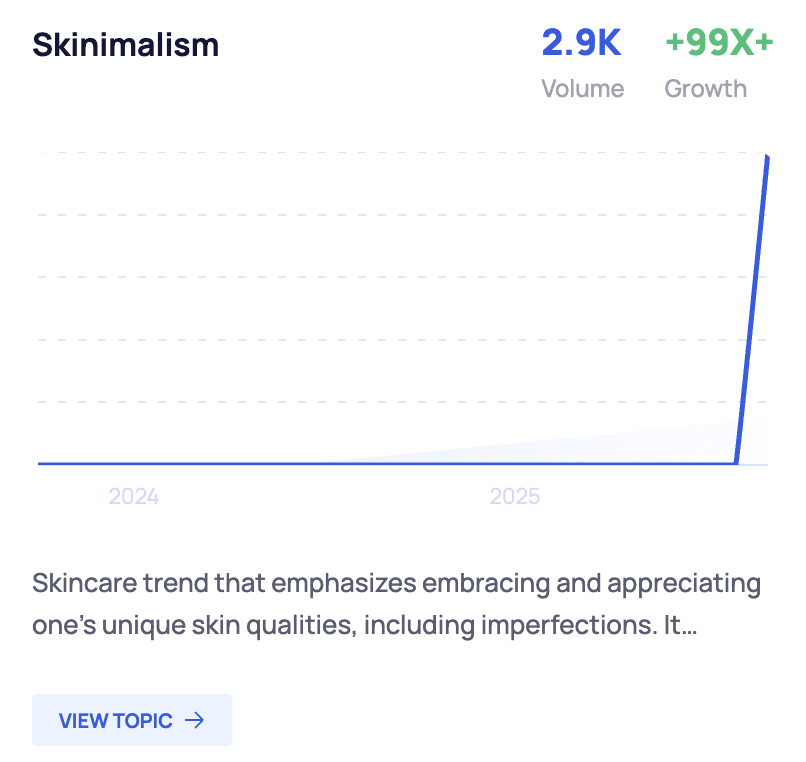
In either case, becoming aware of what your audience is talking about is critical to contributing to relevant conversations. To go even more audience-specific, you can use a tool like Sparktoro to see what your audience is talking about and where. Here’s a look at the keywords that matter to audiences who search for “skincare.”
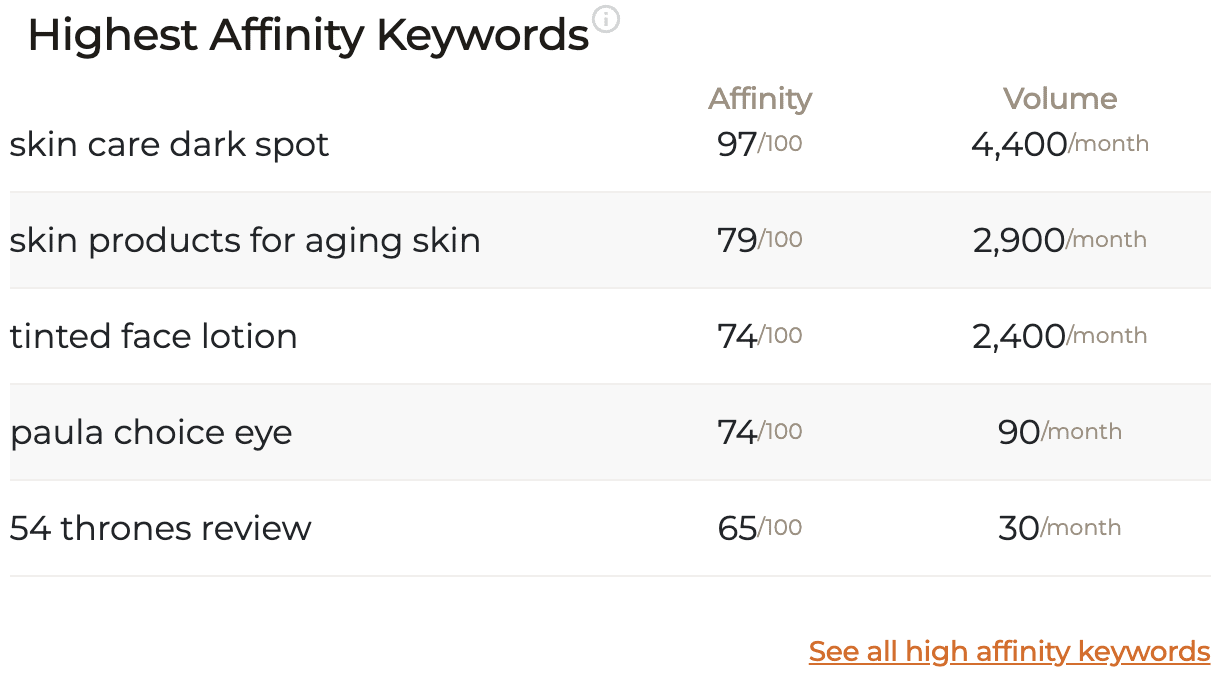
Write Eye-Catching Headlines
When someone sees your content getting shared on X (formerly Twitter), TikTok, and other social sites, your title is what ultimately pushes them to click.
So, while your content itself is super important, your title can make or break how your post does.
Headlines with numbers can grab readers’ attention and persuade them to click.
So, whenever it makes sense, use a specific number in your title. Like “9 Data-Backed Ways to Improve Your Content” and “14 Chew Toys Your Dog Can’t Destroy.”
HubSpot reports that adding brackets to your headlines can also lead to more clicks and shares.
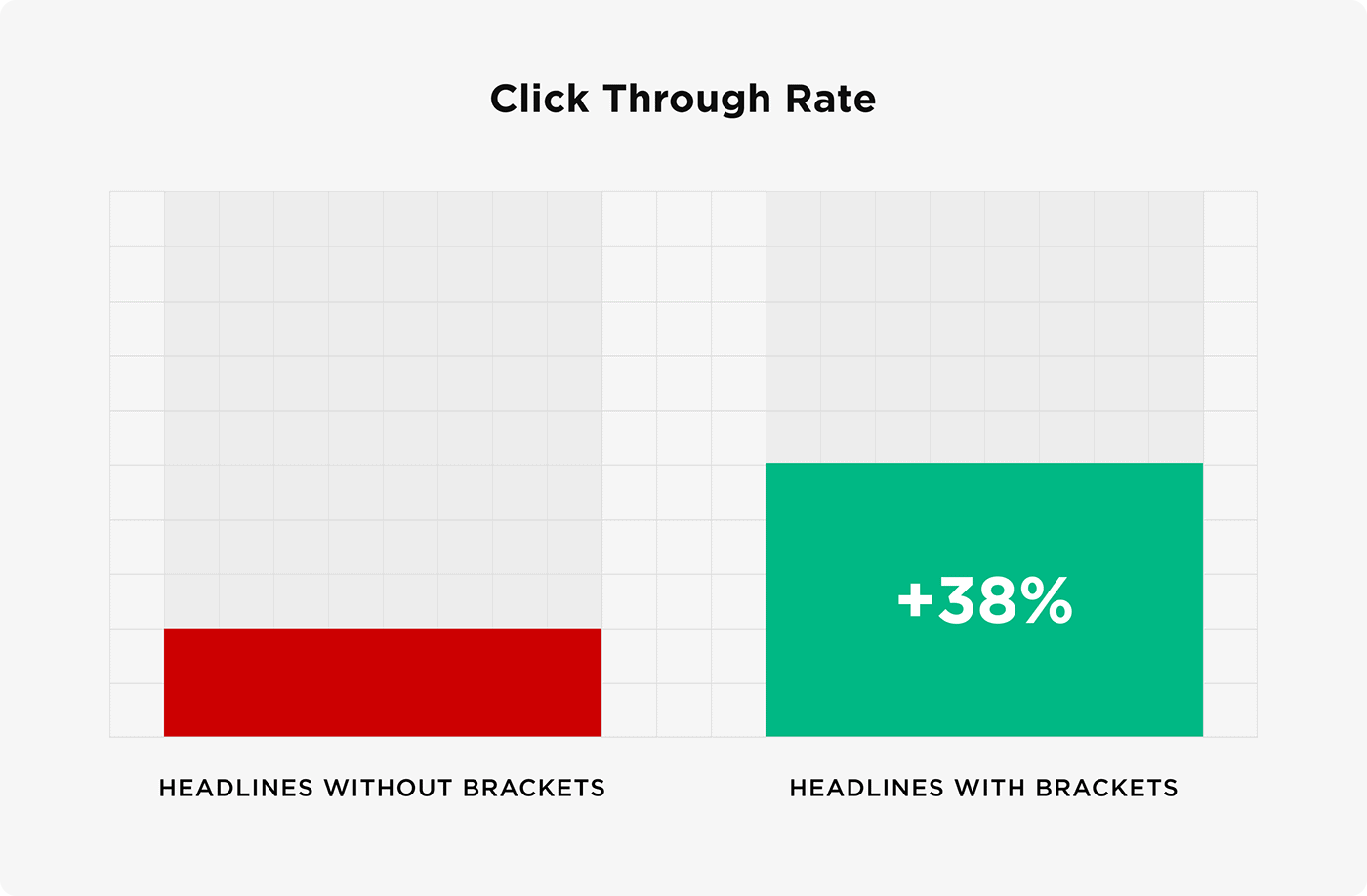
Brackets give people a “sneak preview” of your post.
- 10 Proven Marketing Strategies to Try [Report]
- The Ultimate Guide to Content Marketing [Free Template Included]
- How to Master Social Media Marketing [Step-by-Step Tutorial]
- Top 5 Digital Marketing Techniques [From Industry Experts]
These headlines leverage brackets to offer extra information or highlight value, making them more compelling for readers.
Is your post an infographic? A case study? A video?
Brackets let people know… before they click.
For example, here’s the headline from one of my posts.

The text in the brackets lets readers know that my post is an actionable step-by-step guide.
Create Captivating Introductions
People only read about 28% of a blog post. So, if you want your post to go reach a wide audience, you need to hook readers fast.
This means your intro should be compelling and interesting.
Besides that, you might also want to try using short sentences.
Dr. John Morkes found that short sentences boosted content readability by 58%.
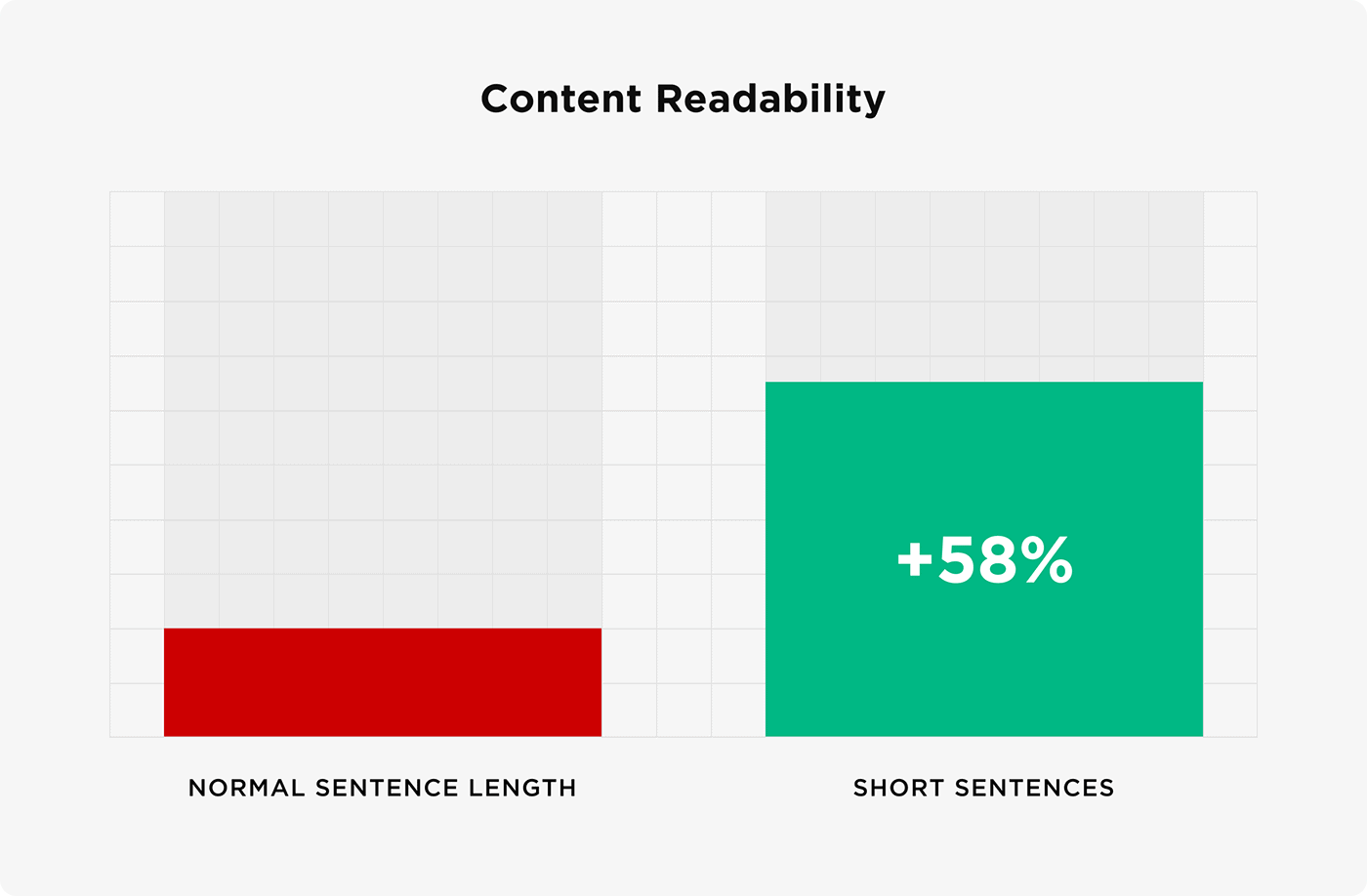
Here’s an example of an intro that uses short sentences.

Use Colorful Visuals
Images make your content much more compelling.
(Especially compared to a blog post that’s 100% text.)
Plus, cool-looking visuals will end up in tweets and Facebook posts. Which can help your content go viral.
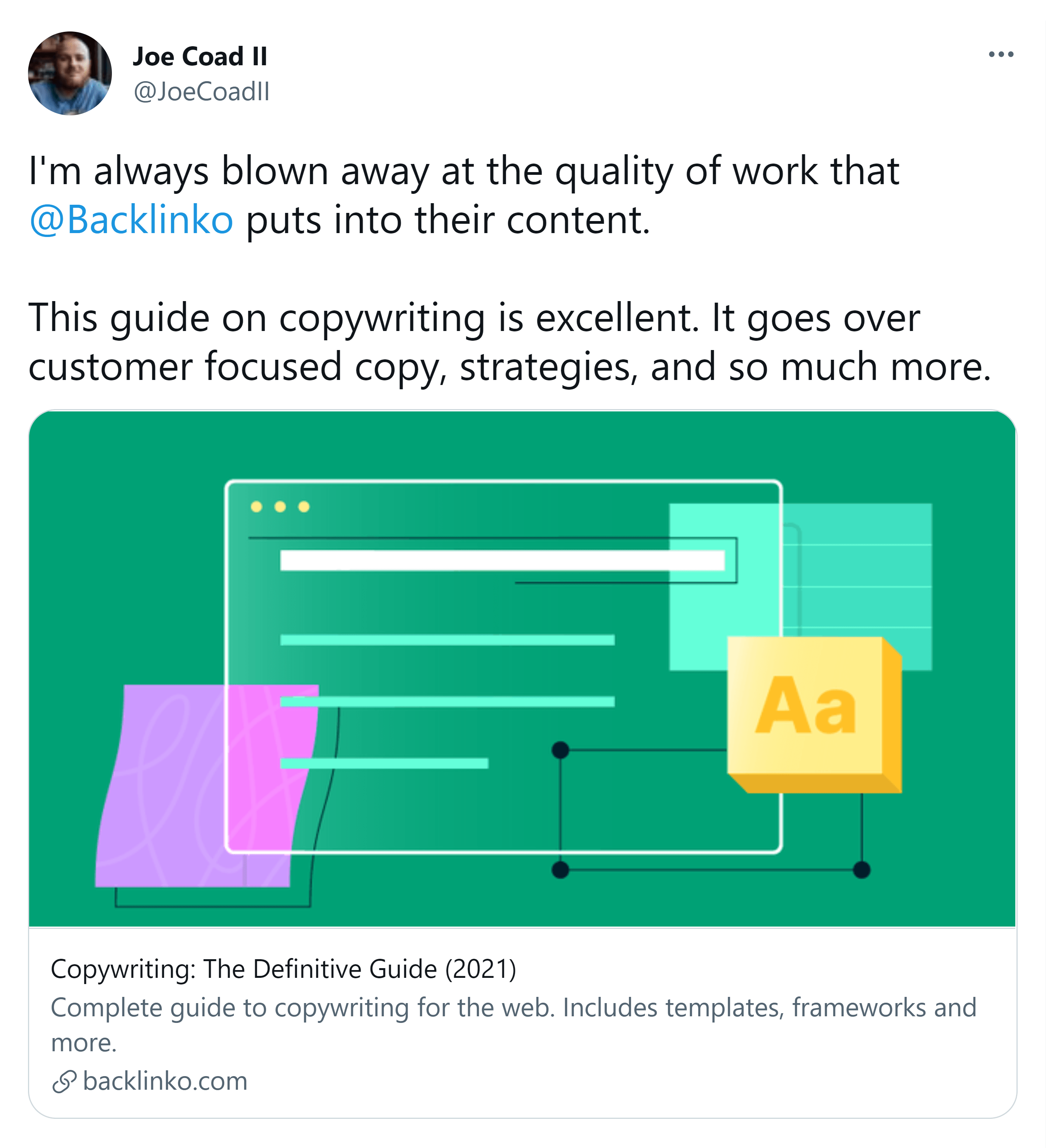
There’s evidence to back this up.
Xerox found that colorful visuals made people 80% more likely to read a document.
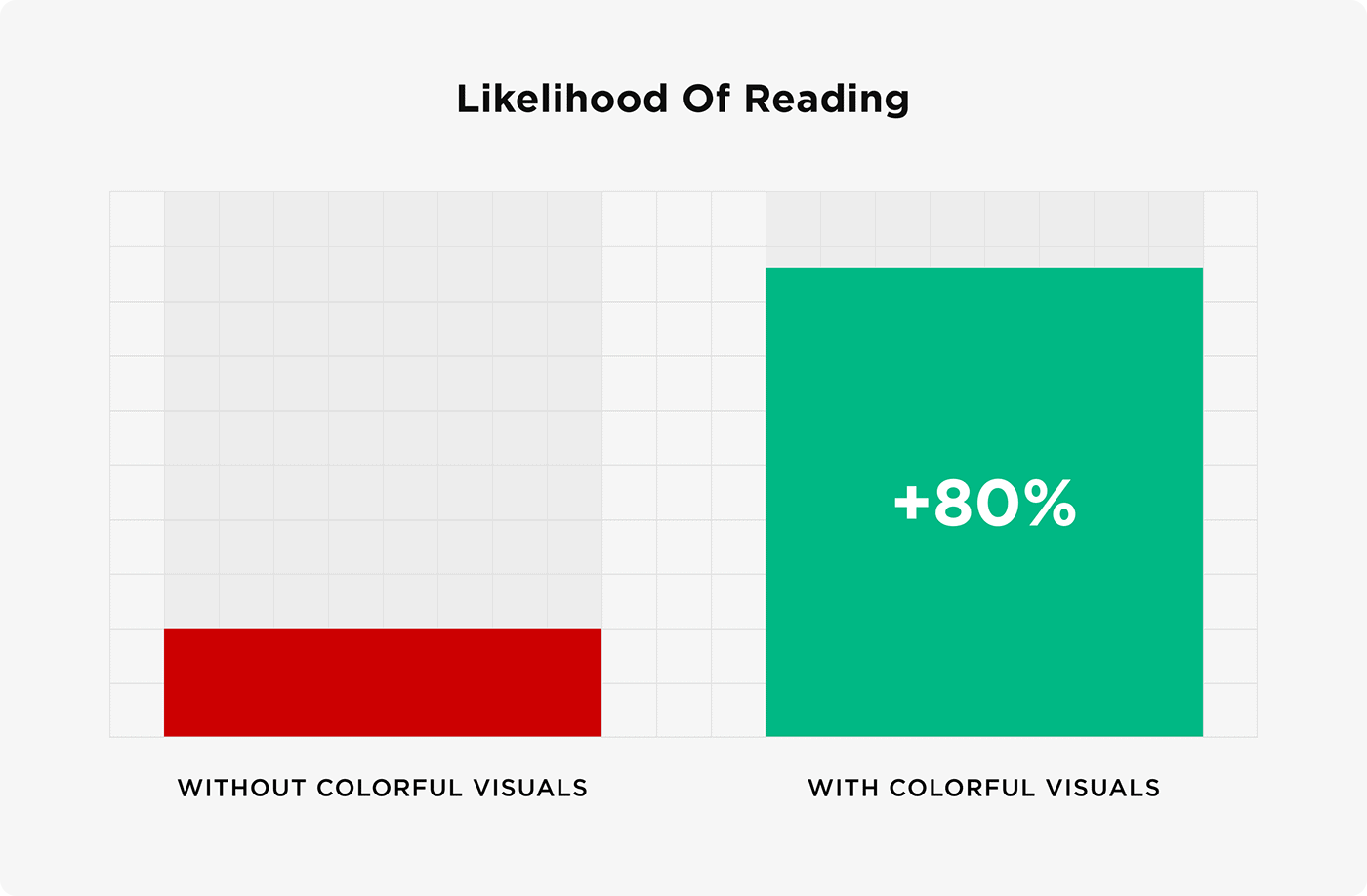
What if colorful images don’t make sense for your post?
No worries. Just make sure to include something visual.
Venngage found that original infographics and illustrations are the best-performing visuals. But stock photos, graphs, and charts aren’t far behind.
Set a Featured Image
Social shares with images get 35% more retweets on X. And Facebook says posts with visuals tend to receive more likes, shares, and comments.
This is why a featured Image can help you create highly shared content.
A featured Image is an image that automatically appears when people share your content on Facebook, LinkedIn, and other social media platforms.
For example, we set this as the featured image for this piece of content.

And whenever someone shares it, that image shows up underneath the post.

Place Share Buttons Above The Fold
A Google study found that elements above the fold are seen by 58% more people than elements that are further down the page.
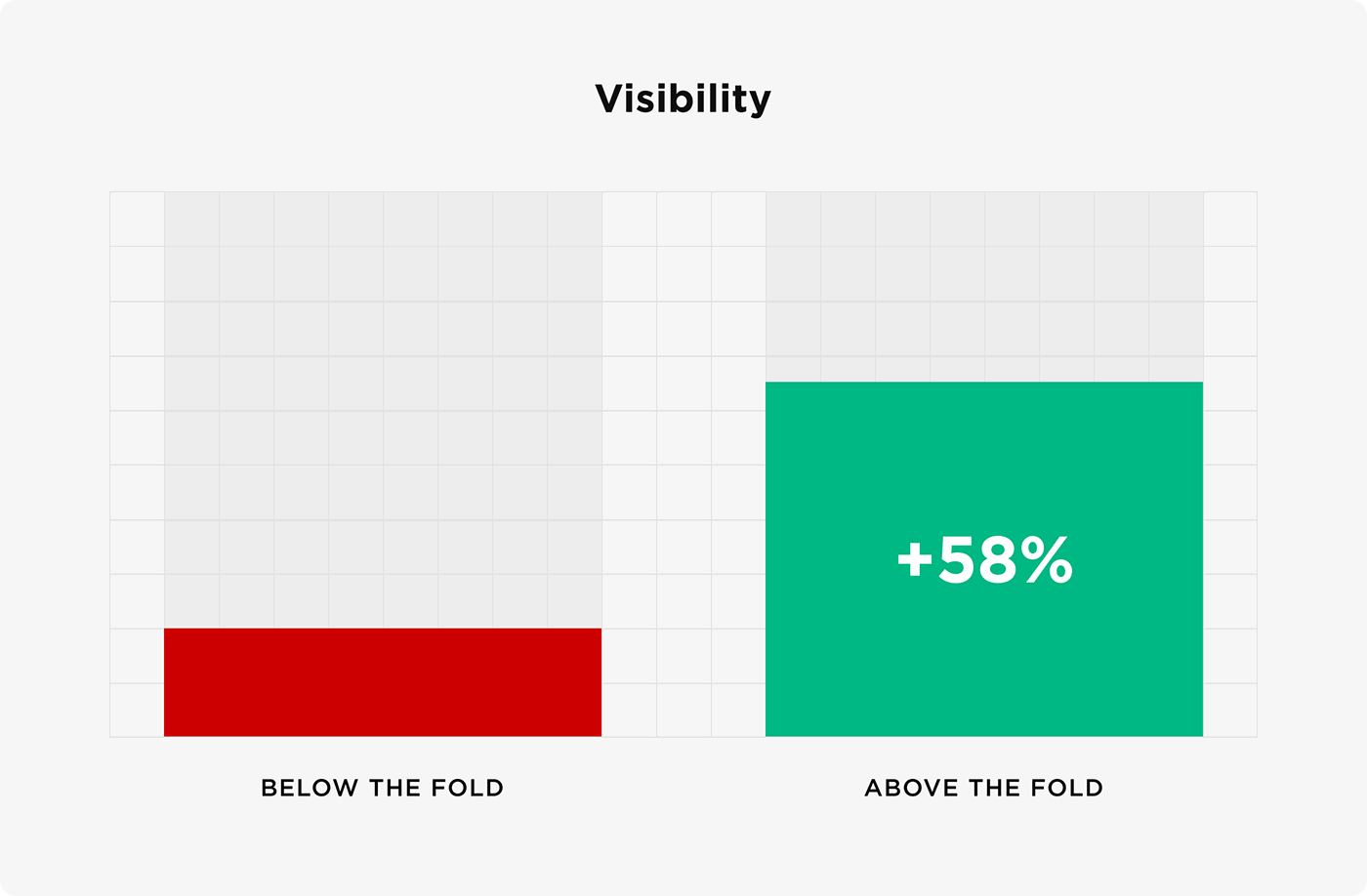
This is why you want to place your social sharing buttons high up on your page.
Here’s an example:

Publish Emotionally-Charged Content
For years, marketers have talked about the importance of content driving an emotional response.
That’s because content that sparks an emotional reaction is far more likely to be engaged with.
A 2021 study showed that “the most effective strategies to generate more interactions on Instagram are those that elicit emotional responses and provoke viewer engagement by asking questions and directing actions.”
So, consider this when putting together your next social post.
Promote With Influencers
Looping in, mentioning, or working with influencers in your space can dramatically increase the number of people who see your content.
Next time you’re putting together content, ask yourself if there is someone else who could add something valuable to the piece.
Then, when they promote it, you get significantly more eyes on the content.
You can, of course, also go the paid influencer route.
Publish Practical Content
Not everything you publish should be highly emotional.
Dr. Jonah Berger found that highly-practical articles are 34% more likely to go viral.
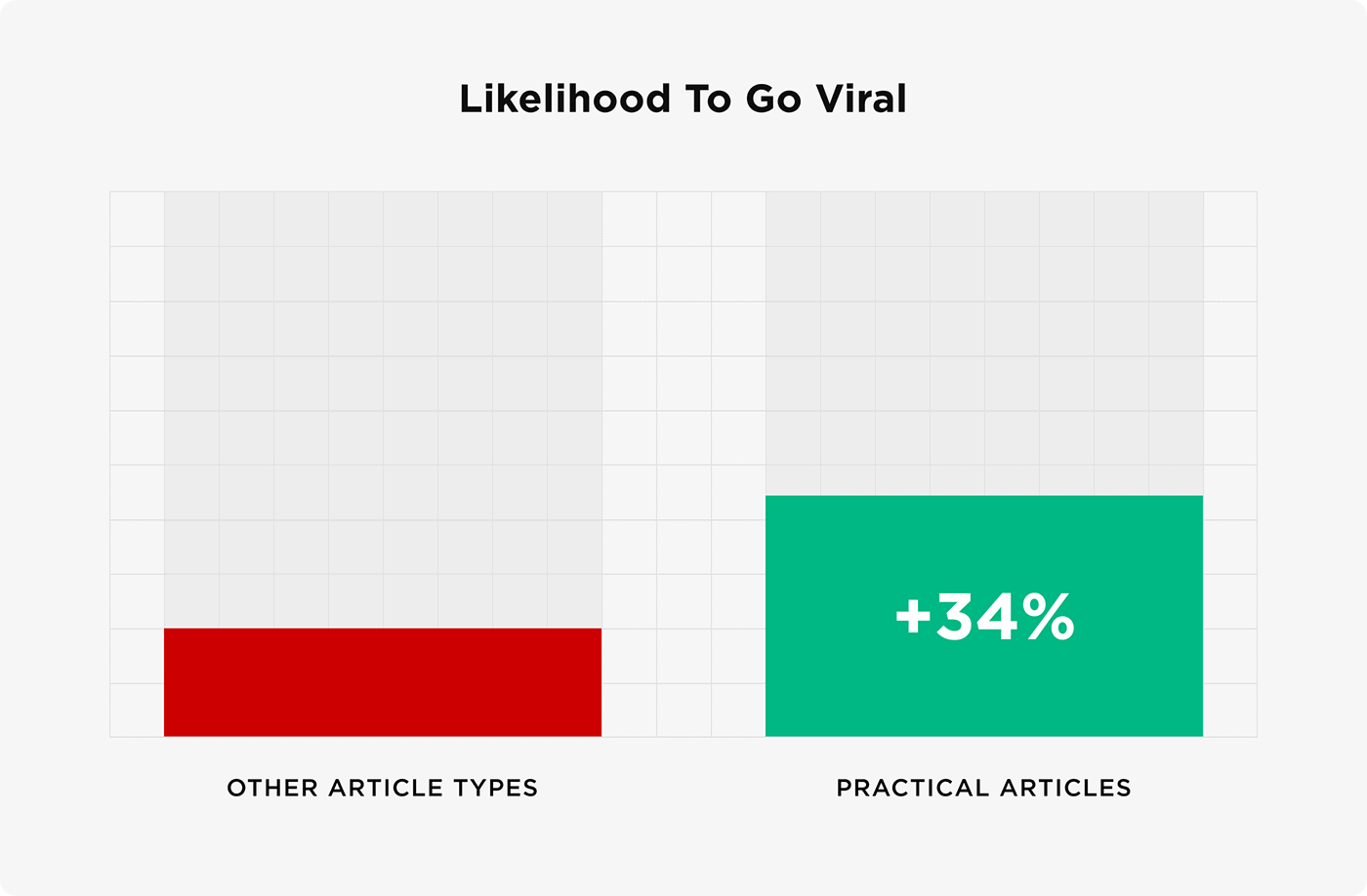
So, if you don’t want to create controversial or emotionally charged content, consider practical content, like recipes and how-to guides.
When done well, practical content has a decent chance of going viral, too.
For example, some time ago, we published a guide to writing a blog post.
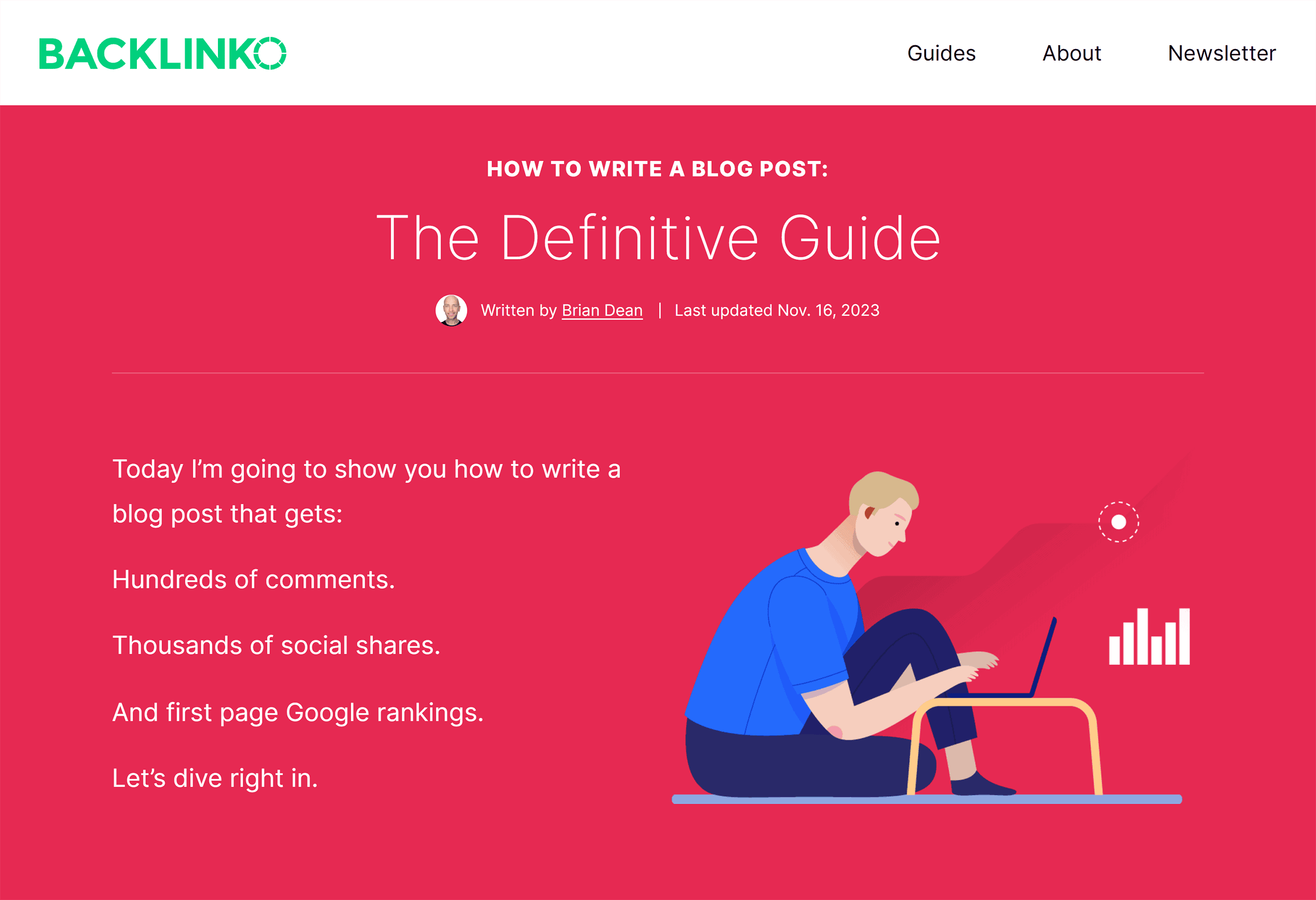
There wasn’t anything super controversial or emotional in the guide. But it was super practical.
And all of the actionable tips in our guide helped it rack up over 6,000 shares.
Focus On List Posts and Why Posts
Are there types of content that get shared more often?
Yes.
List posts and why posts get more shares than videos, infographics, and how-to posts.
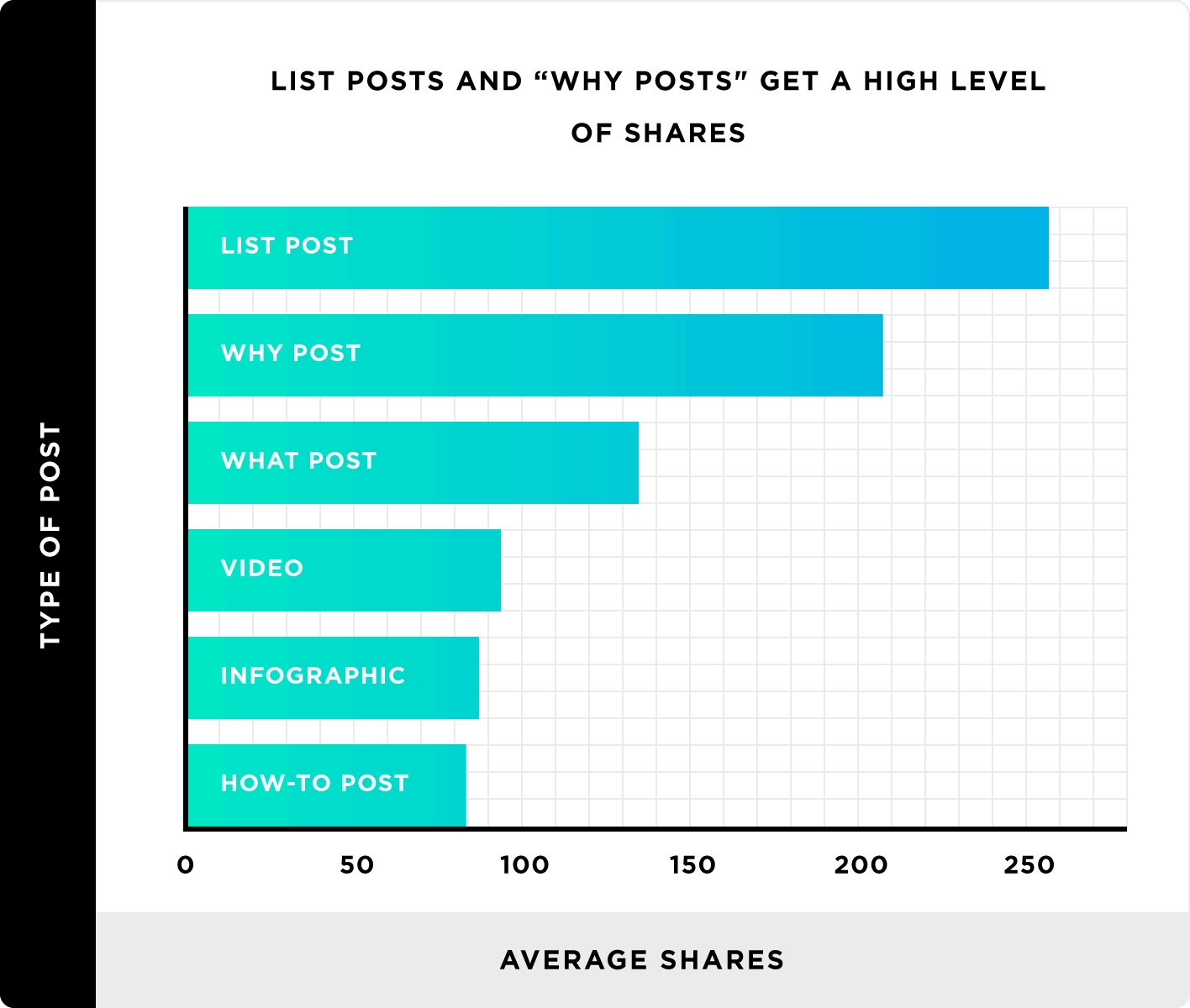
Focus on Content Quality over Virality
When it comes down to it, no one can predict if content will go viral. But there are steps you can take to help your articles get more exposure with your target audience.
The most important approach is creating high-quality content that aligns with your target audience’s preferences and pain points. And their search intent.
Read our Content Writing 101 guide to learn how to create content that resonates with readers. And gets more clicks, shares, and conversions.
Learn More
The Definitive Guide to Viral Marketing: Learn how to create products, videos, and content that goes viral.
We Analyzed 912 Million Blog Posts. Here’s What We Learned About Content Marketing: This study attempts to answer the question, “How do I create viral content?”
My Video Went Viral. Here’s Why: A super in-depth case study of how a YouTuber created a video that went viral and racked up 37 million views.